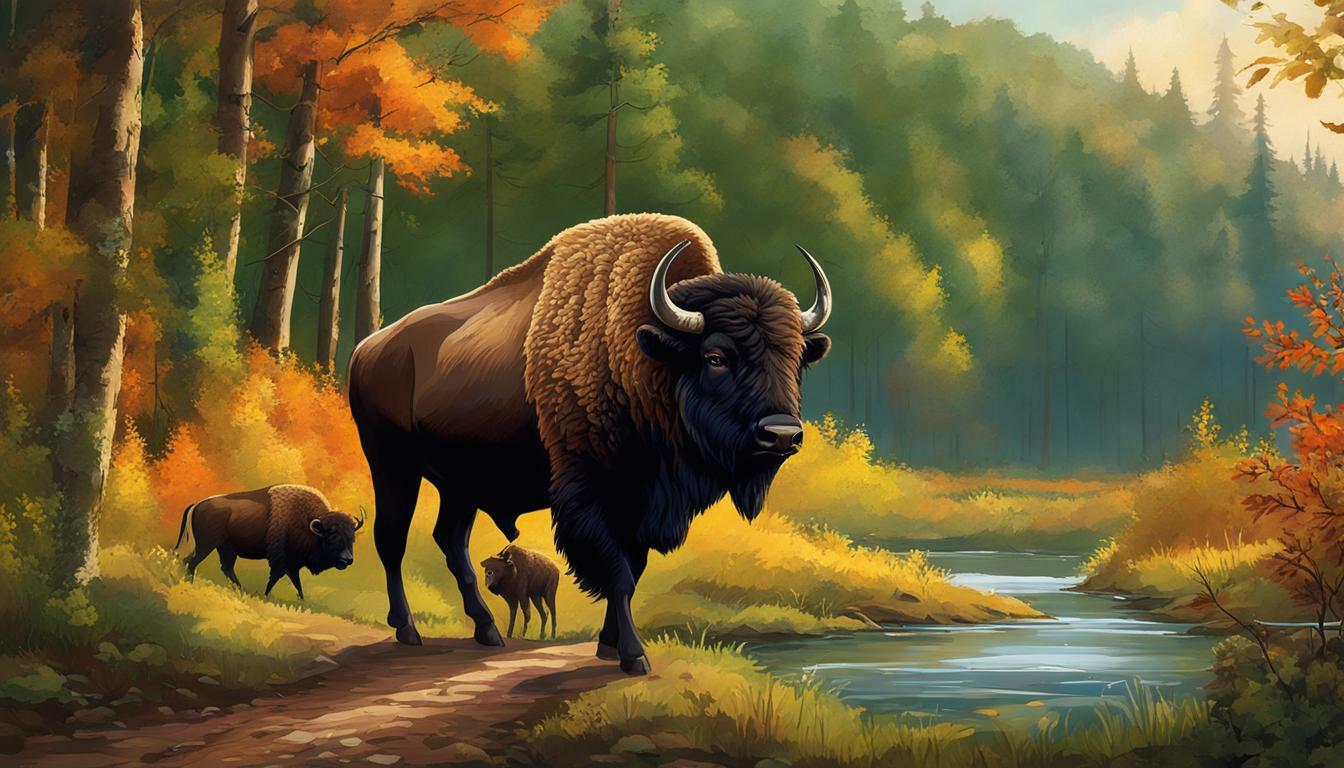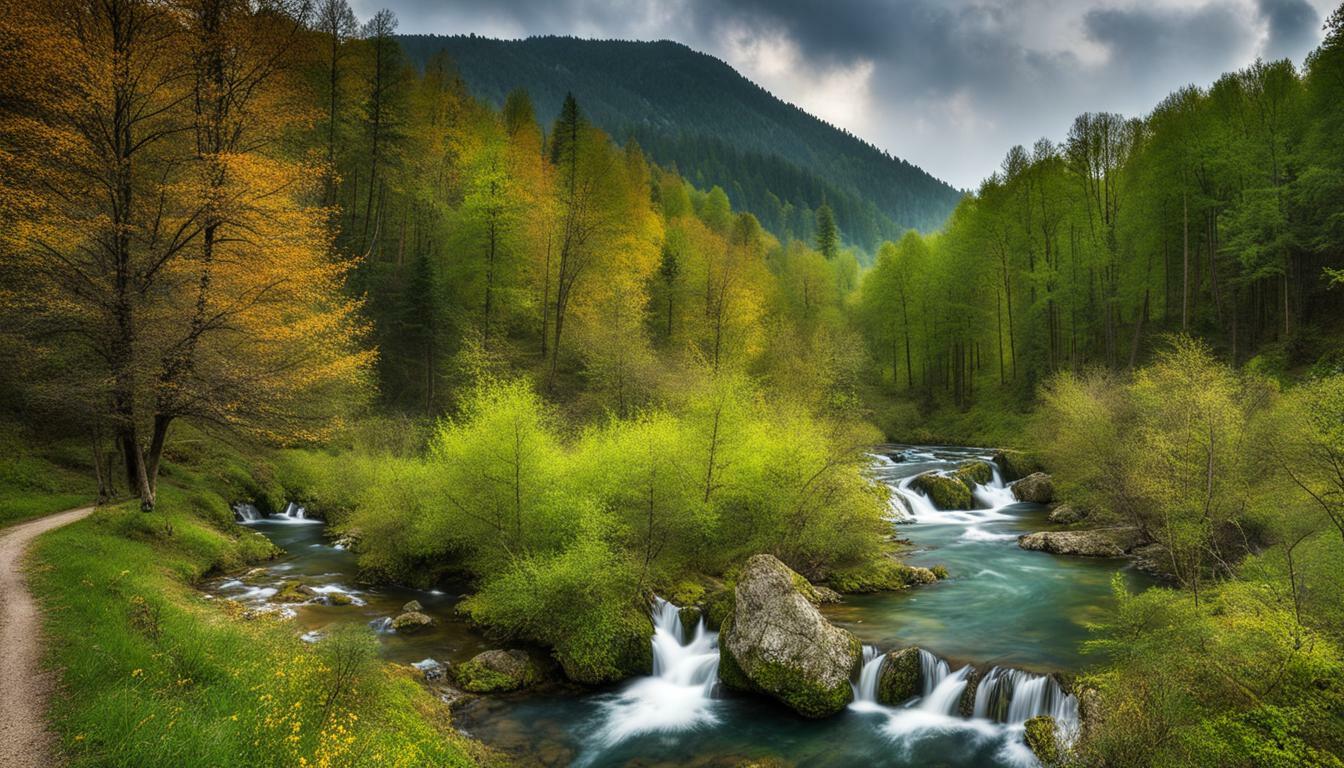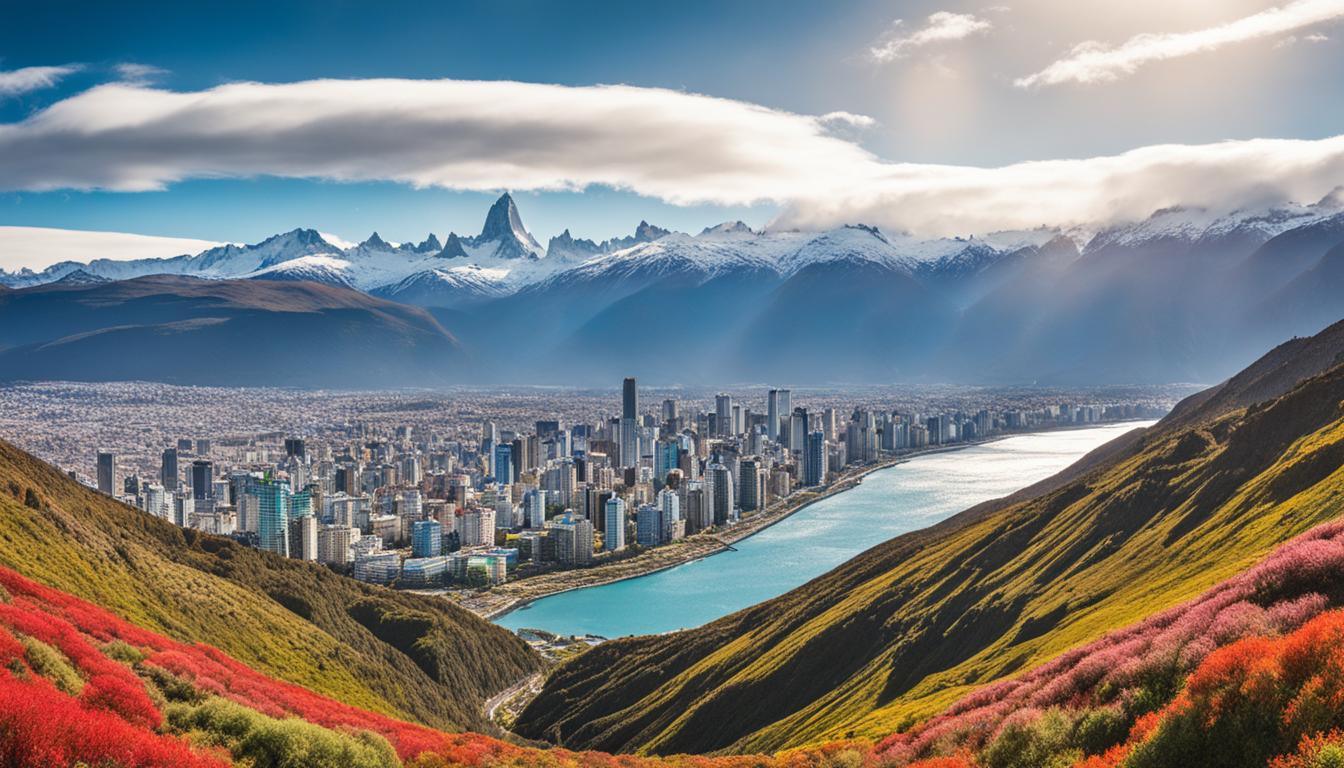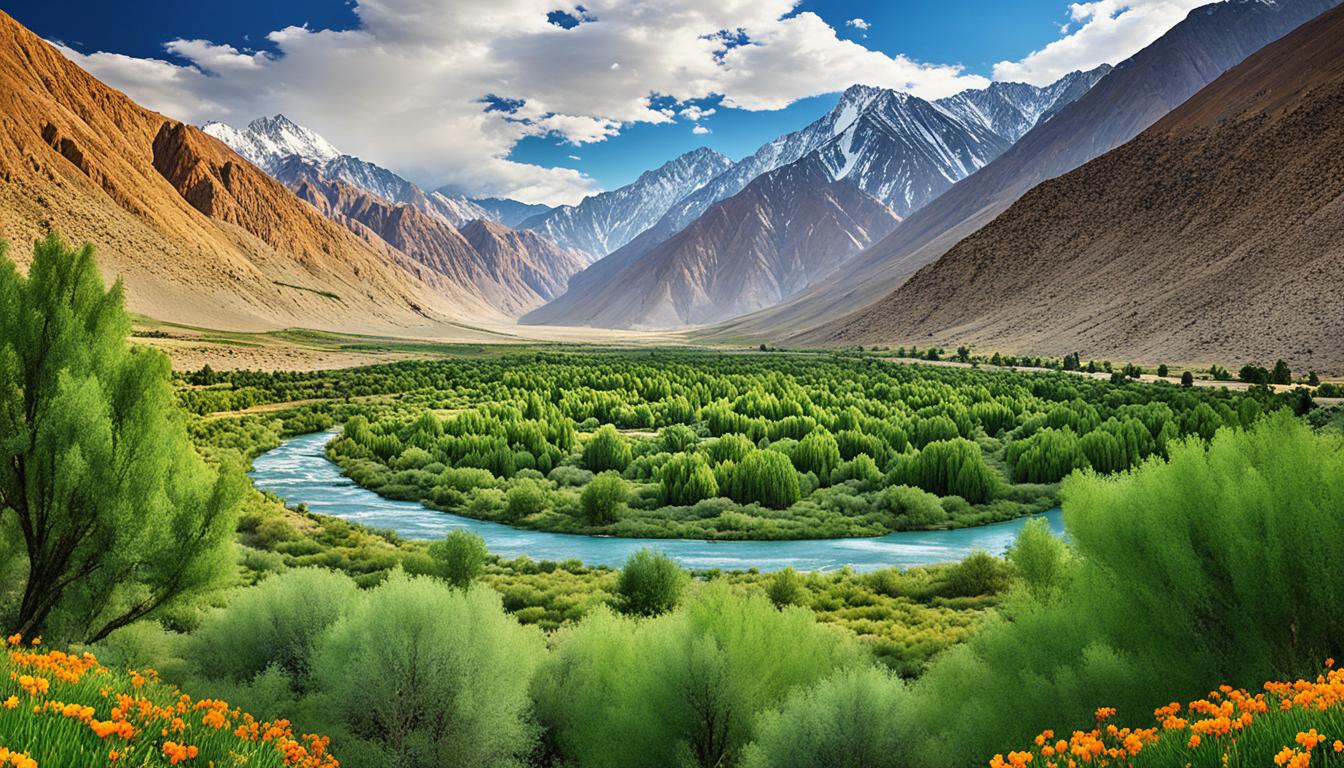Brazil Biodiversity: Animal and Plant Species and What Is Under Threat
Welcome to the captivating world of Brazil biodiversity, where a rich tapestry of unique plant and animal species thrive despite the challenges they face. Brazil’s remarkable ecosystems are home to an astounding array of flora and fauna that have captured the imagination of scientists and nature enthusiasts alike. However, this biodiversity is under significant threat, posing a grave risk to the delicate balance of life in this vibrant nation.
- Brazil’s biodiversity of animal and plant species is under significant threat due to global warming and deforestation.
- The Amazon rainforest, home to countless unique species, has already lost a fifth of its original forests, pushing it towards a tipping point of irreversible damage.
- The Cerrado hotspot, with its rich biodiversity, is also in jeopardy.
- Threatened species in Brazil include the Brazilian merganser, blue-eyed ground dove, maned wolf, giant armadillo, and giant anteater.
- Major threats to biodiversity in Brazil include deforestation, intensive land use, urban expansion, industrialization, fuelwood harvesting, palm heart poaching, and wildlife trade.
These sobering facts highlight the urgent need for action to protect Brazil’s rich biodiversity. As we delve deeper into the world of Brazil’s ecosystems, it becomes clear that safeguarding these unique and vulnerable species is crucial for the future of our planet.
The Impact of Global Warming and Deforestation
The delicate balance of Brazil’s biodiversity is under siege from the dual threats of global warming and deforestation, endangering the incredible variety of species found in the country’s hotspots and rainforests. Scientists warn that exceeding temperature targets set in the Paris Agreement could have devastating consequences for Brazil’s unique wildlife. Even if temperatures are later lowered, irreversible damage can occur, leaving species like the endangered Brazilian merganser and the majestic blue-eyed ground dove facing an uncertain future.
Already, the Amazon basin has lost a fifth of its original forests, bringing it dangerously close to a tipping point of 20-25% losses. If this threshold is reached, it would not only accelerate climate change impacts but also increase the risk of species extinctions. Deforestation for activities such as cattle ranching and soy farming poses a significant threat to more than 10,000 species in the Amazon alone. The loss of habitat and disruption of ecosystems are pushing many unique creatures to the brink of disappearance.

The Cerrado hotspot, known for its rich biodiversity, is also under threat. With approximately 12,000 plant species and over 850 bird species, 30 of which are endemic, the Cerrado is a treasure trove of unique flora and fauna. However, ongoing deforestation and land conversion for agriculture and urbanization are putting these species at risk. From the elusive maned wolf to the giant armadillo and the iconic giant anteater, many animals in the Cerrado are facing an uncertain future.
The threats posed by global warming and deforestation extend beyond individual species. They affect entire ecosystems, disrupt ecological balance, and have far-reaching consequences for the environment and human well-being. Urgent action is needed to address these threats and protect Brazil’s extraordinary biodiversity before it’s too late. Through conservation efforts and sustainable practices, we can ensure the survival of these unique species and safeguard Brazil’s natural heritage for generations to come.
The Amazon Rainforest: A Precious Ecosystem at Risk
The Amazon rainforest, a haven for Brazil’s remarkable wildlife, is facing a dire future as deforestation for various human activities continues to threaten its rich biodiversity. Scientists warn that the loss of this precious ecosystem could have catastrophic consequences not only for Brazil but for the entire planet. The Amazon basin has already lost a fifth of its original forests, pushing it towards a tipping point of 20-25% losses, which would accelerate climate change impacts and species extinctions.
Deforestation for cattle ranching, soy farming, and other uses has put more than 10,000 species at risk of disappearing in the Amazon alone. Among the many unique creatures that call this vast rainforest home are the minuscule orange frog and the collared titi monkey. These species, along with countless others, face an uncertain future as their habitats are destroyed.
The urgency to protect the Amazon rainforest and its biodiversity cannot be overstated. Efforts to combat deforestation and promote sustainable land use are crucial for the survival of these extraordinary species. As individuals, communities, and governments, we must come together to safeguard this invaluable ecosystem for future generations. Only through immediate action can we hope to ensure the preservation of Brazil’s wildlife and the conservation of its unparalleled biodiversity.

“The Amazon rainforest is a global treasure, housing an astonishing array of flora and fauna found nowhere else on Earth,” says Dr. Ana Silva, a leading conservation biologist.
“But rampant deforestation threatens to erase this natural wonder, pushing countless species to the brink of extinction. We must act urgently to protect the Amazon and preserve its rich biodiversity for the benefit of future generations.”
Brazil’s Remarkable Wildlife in Peril
Brazil is home to some of the most diverse and unique wildlife in the world. Its incredible biodiversity is not only a source of national pride but also of global significance. The lush forests, vast wetlands, and diverse ecosystems of Brazil provide habitats for countless species, many of which are found nowhere else on the planet.
However, the threats facing Brazil’s wildlife are vast. Deforestation, driven by human activities, continues to destroy vital habitats and disrupt delicate ecosystems. The loss of these habitats not only endangers iconic species like the jaguar and the giant otter but also has a ripple effect on the entire ecosystem, affecting plants, insects, and other animals that rely on these habitats for survival.
Conservation efforts and sustainable practices are essential to protect Brazil’s remarkable wildlife and ensure the long-term survival of its unique species. By preserving these habitats and promoting responsible land use, we can help safeguard Brazil’s biodiversity and contribute to the global effort to protect our planet’s natural heritage.
| Species | Threat Level |
|---|---|
| Brazilian Merganser | Endangered |
| Blue-eyed Ground Dove | Critically Endangered |
| Maned Wolf | Near Threatened |
| Giant Armadillo | Vulnerable |
| Giant Anteater | Vulnerable |
The Cerrado Hotspot: A Forgotten Treasure
Nestled within Brazilian ecosystems, the often-overlooked Cerrado hotspot holds a treasure trove of biodiversity, with its vast array of plant and bird species captivating researchers and nature enthusiasts alike. This unique savanna biome spans over 2 million square kilometers, making it Brazil’s second-largest biome after the Amazon rainforest. Despite its remarkable ecological value, the Cerrado remains largely unrecognized and under threat.
The Cerrado hotspot is home to approximately 12,000 plant species, including many endemic and endangered species. Its stunning flora includes vibrant orchids, bromeliads, and an abundance of grasses and shrubs. This botanical diversity supports a rich variety of fauna, including over 850 bird species, 30 of which are found nowhere else on Earth. Researchers continue to discover new species within this biodiverse region, highlighting its immense scientific significance.
However, the Cerrado’s biodiversity is under severe pressure. Deforestation, driven primarily by agriculture and urban expansion, threatens this unique ecosystem. Large-scale clearing of land for soy farming, cattle ranching, and infrastructure development has resulted in habitat loss and fragmentation, endangering countless plant and animal species. The unchecked expansion of industrial activities, fuelwood harvesting, and illicit wildlife trade further exacerbate the threats faced by the Cerrado’s biodiversity.
The Cerrado Hotspot in Numbers
| Statistic | Value |
|---|---|
| Size of the Cerrado hotspot | Over 2 million square kilometers |
| Number of plant species | Approximately 12,000 |
| Number of bird species | Over 850, including 30 endemics |
| Threats to the Cerrado | Deforestation, agriculture, urban expansion, industrialization, fuelwood harvesting, wildlife trade |
Efforts are underway to protect and conserve the Cerrado hotspot and its precious biodiversity. Conservation organizations, researchers, and local communities are collaborating to raise awareness, establish protected areas, and promote sustainable land use practices. However, urgent action is needed to combat the growing threats and ensure the long-term survival of this forgotten treasure within the Brazilian ecosystems.

From the regal Brazilian merganser to the elusive maned wolf, numerous species in Brazil’s diverse ecosystems are teetering on the brink of extinction, threatened by the destructive forces of human activities. Unprecedented deforestation, intensive land use, urban expansion, and industrialization have taken a toll on the country’s rich biodiversity, placing many iconic and unique species at risk.
The Brazilian merganser (Mergus octosetaceus), also known as the “saw-billed merganser,” is a critically endangered waterfowl species that has been greatly affected by habitat destruction and pollution. With its striking black-and-white plumage and serrated bill, it is a true natural wonder. However, its population has drastically declined due to deforestation and the damming of rivers, disrupting its habitat.
Another notable species facing imminent extinction is the maned wolf (Chrysocyon brachyurus). This majestic and enigmatic creature, resembling a long-legged fox, is a symbol of the Brazilian savanna ecosystem. Rapid habitat loss and fragmentation caused by agricultural expansion and human encroachment have severely impacted its numbers. The maned wolf’s future now hangs in the balance, highlighting the urgent need for conservation efforts to protect its habitat.
It is crucial to recognize that these threatened species represent just a fraction of the alarming situation faced by wildlife in Brazil. Many other reptiles, amphibians, and freshwater fishes are also at risk due to habitat destruction, pollution, and the illegal wildlife trade. Without swift action to address the root causes of their decline, these incredible species may disappear forever, leaving behind a void in Brazil’s ecosystems that can never be filled.

| Threatened Species | Common Name |
|---|---|
| Brazilian merganser | Saw-billed merganser |
| Maned wolf | Chrysocyon brachyurus |
| Blue-eyed ground dove | Columbina cyanopis |
| Giant armadillo | Priodontes maximus |
| Giant anteater | Myrmecophaga tridactyla |
Major Threats to Biodiversity in Brazil
The vibrant tapestry of Brazil’s biodiversity faces an array of formidable threats, including deforestation, urban development, and the insidious wildlife trade, jeopardizing the fragile balance of nature. These threats pose a significant risk to the unique and diverse flora and fauna found in Brazil, highlighting the urgent need for conservation efforts and immediate action to protect Brazil’s rich biodiversity.
Deforestation, driven by the expansion of agriculture, logging, and infrastructure development, is one of the major threats facing Brazil’s biodiversity. The Amazon rainforest, which is home to countless species of plants and animals found nowhere else on Earth, has experienced alarming rates of deforestation. The clearing of land for activities such as cattle ranching and soy farming has resulted in the loss of habitat for wildlife, pushing many species to the brink of extinction.
Urban development and industrialization also contribute to the destruction of natural ecosystems in Brazil. Rapid urban expansion often leads to the loss of important habitats, fragmenting landscapes and isolating species populations. Industrial activities, such as mining and pollution, further degrade the environment and pose additional risks to the survival of vulnerable species.
Furthermore, the wildlife trade presents a significant threat to Brazil’s biodiversity. Poaching and illegal trafficking of animals for the exotic pet trade and traditional medicine industry are widespread issues. This illicit trade not only depletes wild populations but also disrupts ecosystems, as the removal of key species can have cascading effects on the entire ecosystem.
| Threats | Impact |
|---|---|
| Deforestation | Loss of habitat, species extinction, climate change |
| Urban development | Habitat destruction, habitat fragmentation, species isolation |
| Industrialization | Habitat degradation, pollution, species decline |
| Wildlife trade | Species depletion, ecosystem disruption, illegal activities |

“The destruction of Brazil’s natural ecosystems poses a dire threat to the incredible biodiversity found in this country. Urgent action is required to preserve these invaluable natural resources and safeguard the future of countless species.” – Dr. Ana Silva, Environmental Scientist
In summary, the major threats to biodiversity in Brazil, including deforestation, urban development, and the wildlife trade, are putting immense pressure on the country’s unique ecosystems. The loss of habitat, species extinction, and disruption of delicate ecological balance are some of the significant impacts associated with these threats. It is crucial for individuals, communities, and governments to come together and take immediate action to protect and conserve Brazil’s precious biodiversity for future generations.
The Devastation of the Atlantic Forest
The once-thriving Atlantic Forest, home to a multitude of fascinating flora and fauna, now stands as a testament to the devastating consequences of human actions, with countless species teetering on the edge of extinction. This remarkable biome, spanning over 1.5 million square kilometers along the eastern coast of Brazil, was once a vibrant tapestry of lush greenery and diverse wildlife.
However, deforestation for agricultural expansion, urban development, and logging has taken a severe toll on the Atlantic Forest. Today, only around 7% of its original cover remains, fragmented into small patches that struggle to sustain the intricate web of life that once thrived within its borders.
Threatened Species and Ecological Impacts
The destruction of the Atlantic Forest has devastating consequences for its rich biodiversity. Numerous species, including the critically endangered golden lion tamarin and the iconic jaguar, now face an uncertain future. The loss of habitat and fragmentation of the forest have severely restricted their populations, pushing them closer to extinction.
This ecological tragedy also extends to countless plant species, some of which are found nowhere else on the planet. From towering trees to delicate orchids, the disappearing flora of the Atlantic Forest represents an irreplaceable loss in the global botanical tapestry.
The impacts of the Atlantic Forest’s devastation reach far beyond its borders. This unique biome plays a crucial role in regulating local climates, conserving water resources, and preserving soil fertility. Its loss threatens to disrupt these vital ecosystem services, impacting nearby communities and exacerbating environmental challenges.
<!– –>
–>
| Threatened Species | Conservation Status |
|---|---|
| Golden Lion Tamarin | Critically Endangered |
| Jaguar | Near Threatened |
| Red-billed Curassow | Endangered |
| Orchidaceae | Various species at risk |
Efforts to protect and restore the Atlantic Forest are crucial in safeguarding its remaining biodiversity. Reforestation initiatives, the creation of protected areas, and sustainable land-use practices offer hope for the revival of this once majestic landscape. It is our collective responsibility to act swiftly and decisively to ensure the survival of the Atlantic Forest and the incredible species that call it home.
Urgent Action Required
The time for action is now, as we stand on the precipice of losing some of Brazil’s most extraordinary wildlife and ecosystems, calling on all to join hands in the crucial mission of conservation. Brazil’s biodiversity is under significant threat, and it is up to us to protect and preserve the incredible richness of its flora and fauna for future generations.
Deforestation, intensive land use, urban expansion, industrialization, fuelwood harvesting, palm heart poaching, and the wildlife trade are all contributing to the destruction of Brazilian ecosystems. These activities have devastating consequences, leading to the loss of countless species and the degradation of vital habitats.
It is not just the iconic Amazon rainforest that is at risk. The lesser-known Cerrado hotspot, with its remarkable biodiversity of plant and bird species, is also facing numerous threats. Additionally, the Atlantic Forest, which houses a significant portion of Brazil’s human population, has been severely impacted by widespread destruction.
We must address these critical issues through collective actions. Governments need to implement stronger environmental policies and regulations, while individuals can contribute by supporting organizations that work towards the conservation of Brazilian biodiversity. By raising awareness and taking steps to reduce our own ecological footprint, we can make a difference.
Join the Fight to Safeguard Brazil’s Biodiversity
Conservation efforts are key to protecting Brazil’s wildlife and ecosystems. By supporting research initiatives, establishing protected areas, and implementing sustainable practices, we can help ensure the survival of endangered species and the preservation of Brazilian ecosystems.

It is our responsibility to act now before it’s too late. Together, let’s rise to the challenge and safeguard the incredible wealth of biodiversity that Brazil has to offer. Our actions today will shape the future of this diverse and fragile ecosystem for generations to come.
The Resilience of Brazil’s Biodiversity
Amidst the trials and tribulations faced by Brazil’s extraordinary biodiversity, a flicker of hope emerges as nature demonstrates its remarkable resilience in the face of adversity. Despite the significant threats posed by global warming and deforestation, many species have shown incredible adaptability, finding ways to survive and thrive in their changing environment.
In the Amazon rainforest, for example, countless species have evolved unique survival mechanisms to cope with the ever-changing conditions. From the smallest invertebrates to the largest predators, each organism plays a crucial role in maintaining the delicate balance of this diverse ecosystem. The plants, too, have developed ingenious strategies to ensure their survival, from symbiotic relationships with certain insects to efficient nutrient absorption.
Another example of nature’s resilience can be seen in the Cerrado hotspot. Despite being one of the most threatened biomes in Brazil, it continues to support an astonishing array of flora and fauna. Its plant species have adapted to the harsh climate and nutrient-poor soils, showcasing their ability to thrive in seemingly inhospitable conditions. Endemic bird species, such as the critically endangered Araripe manakin, demonstrate the unique biodiversity that exists within this forgotten treasure.
Overall, Brazil’s ecosystems display an awe-inspiring capacity to endure and recover from disruptions. However, it is crucial that we acknowledge the limits of this resilience and take immediate action to protect these invaluable natural habitats. By implementing sustainable practices, promoting conservation efforts, and raising awareness about the importance of biodiversity, we can ensure a brighter future for Brazil’s flora and fauna.
| Threats to Biodiversity | Actions for Conservation |
|---|---|
|
|
|
|
“The diversity and adaptability of Brazil’s flora and fauna are a testament to the extraordinary resilience of nature. We must act now to protect these invaluable resources for future generations.” – Dr. Maria Silva, Biodiversity Researcher

The kaleidoscope of Brazil’s ecosystems, abundant with captivating flora and fauna, serves as a poignant reminder of the urgency to conserve and protect the country’s invaluable biodiversity. Factual data reveals that Brazil’s biodiversity of animal and plant species is under significant threat, particularly due to global warming and deforestation. If temperatures exceed targets set in the Paris Agreement, many unique creatures, such as the minuscule orange frog and the collared titi monkey, could face a bleak future. Even if temperatures are later lowered, irreversible damage would have already occurred.
The Amazon basin, which has already lost a fifth of its original forests, is at risk of reaching a tipping point of 20-25% losses. This would not only accelerate climate change impacts but also lead to the extinction of numerous species. Deforestation for cattle ranching, soy farming, and other uses has endangered more than 10,000 species, highlighting the devastating impact on the Amazon’s biodiversity.
The Cerrado hotspot, with its rich biodiversity, is home to approximately 12,000 plant species and over 850 bird species, 30 of which are endemic. The Brazilian merganser, blue-eyed ground dove, maned wolf, giant armadillo, giant anteater, and many reptiles, amphibians, and freshwater fishes are among the species threatened by habitat loss and other human activities. These threats include deforestation, intensive land use, urban expansion, industrialization, fuelwood harvesting, palm heart poaching, and wildlife trade.
Widespread destruction of natural ecosystems in the Atlantic Forest, which supports approximately 70 percent of Brazil’s human population, has led to the loss of numerous animal and plant species that are now threatened with extinction. This sobering reality emphasizes the urgent need for action to protect Brazil’s rich biodiversity. Conservation efforts are essential, and individuals, communities, and governments must work together to ensure the survival of these unique and vulnerable species. It is only by taking immediate and decisive action that we can secure the future of Brazil’s invaluable ecosystems and the diverse flora and fauna that they harbor.
FAQ
What is the main threat to Brazil’s biodiversity?
The main threat to Brazil’s biodiversity is a combination of global warming and deforestation. These factors have a significant impact on the diverse animal and plant species found in Brazil.
What could happen if temperatures exceed targets set in the Paris Agreement?
If temperatures exceed the targets set in the Paris Agreement, many unique creatures in Brazil, such as the minuscule orange frog and the collared titi monkey, could face a bleak future. Even if temperatures are later lowered, irreversible damage would already have occurred.
How much of the original forests in the Amazon basin have already been lost?
The Amazon basin has already lost a fifth of its original forests. This loss pushes it towards a tipping point of 20-25% losses, which would accelerate climate change impacts and species extinctions.
What are the major threats to biodiversity in Brazil?
Major threats to biodiversity in Brazil include deforestation, intensive land use, urban expansion, industrialization, fuelwood harvesting, palm heart poaching, and wildlife trade. These activities contribute to the destruction of natural ecosystems and put many species at risk of disappearing.
How many species are at risk of disappearing in the Amazon alone?
More than 10,000 species are at risk of disappearing in the Amazon alone. Deforestation for activities such as cattle ranching and soy farming poses a significant threat to the rich biodiversity of the region.
Which hotspot in Brazil is particularly rich in biodiversity?
The Cerrado hotspot in Brazil is particularly rich in biodiversity. It is home to approximately 12,000 plant species and over 850 bird species, with 30 of them being endemic.
What are some of the threatened species in Brazil?
Some of the threatened species in Brazil include the Brazilian merganser, blue-eyed ground dove, maned wolf, giant armadillo, giant anteater, as well as various reptiles, amphibians, and freshwater fishes.
What is causing the loss of numerous animal and plant species in the Atlantic Forest?
The widespread destruction of natural ecosystems in the Atlantic Forest is primarily caused by activities such as deforestation, intensive land use, urban expansion, industrialization, fuelwood harvesting, palm heart poaching, and wildlife trade.
Why is urgent action needed to protect Brazil’s biodiversity?
Urgent action is needed to protect Brazil’s biodiversity because many unique and vulnerable species are at risk of disappearing. Conservation efforts are crucial to safeguard the rich ecosystems and ensure the survival of these precious flora and fauna.
Is there hope for the resilience of Brazil’s biodiversity?
Yes, despite the challenges it faces, Brazil’s biodiversity has shown remarkable resilience. Nature has the incredible ability to adapt and recover, offering hope for the diverse ecosystems of Brazil.








